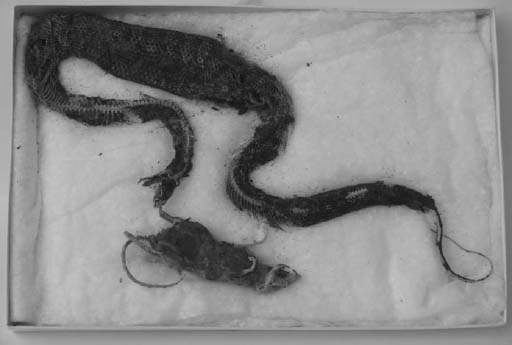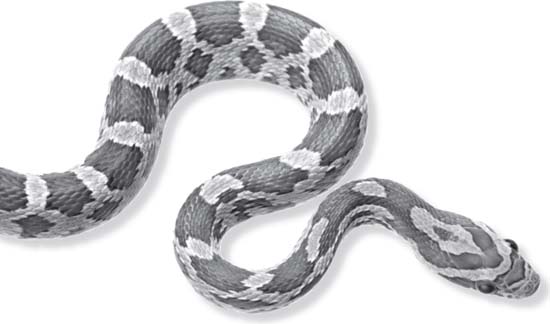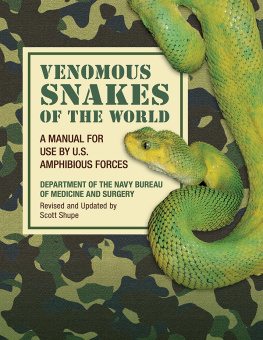
Copyright 2012 by Cindy Blobaum
All rights reserved
First edition
Published by Chicago Review Press, Incorporated
814 North Franklin Street
Chicago, Illinois 60610
ISBN 978-1-56976-807-5
Library of Congress Cataloging-in-Publication Data
Blobaum, Cindy, 1966
Awesome snake science : 40 activities for learning about snakes / Cindy Blobaum. 1st ed.
p. cm.
Includes bibliographical references and index.
ISBN 978-1-56976-807-5 (pbk.)
1. SnakesJuvenile literature. 2. SnakesExperimentsJuvenile literature. 3. SnakesStudy and teaching (Elementary)Activity programs. I. Title.
QL666.O6B64 2012
597.96071dc23
2011050257
Snake Identification
Snakes come in a wide range of colors and sizes. Here are the snakes shown in full color on the covers of this book.
Front Cover: Top: Royal python
First column: Ribbon snake (top) and a king snake skeleton Second column: Snakes eggs (top) and a corn snake. Third column: Parrot snake Fourth column: Red-sided garter snake
Back Cover:
Left to right: Sinaloan milk snake, western rattlesnake, eastern coral snake, and malaysian king cobra.
Cover design: Joan Sommers Design, Chicago
Front cover photographs (clockwise from top): Royal Python Ian McDonnell / iStockphoto; Red-sided Garter snake Sharon Werenich/www.chickadeephotoart.com; Parrot Snake Andrew M. Snyder; snake eggs Annda Purdue; corn snake Christian Weibell/ iStockphoto; skeleton courtesy DigiMorph; Ribbon snake John J. Mosesso/life.nbii.gov.
Back cover photographs (left to right): Sinaloan Milk Snake William Loy / iStockphoto; Western Rattlesnake Steve Mcsweeny /iStockphoto; Eastern Coral Snake Mark Kostich / iStockphoto; Malaysian King Cobra Omar Ariff / iStockphoto
Interior design: Scott Rattray
Interior illustrations: Gail Rattray
Photo credits: All photographs courtesy of Cindy Blobaum unless otherwise noted. Spot art of snakes iStockphoto
Printed in the United States of America
5 4 3 2 1
For Lee, who explores his interests with great enthusiasm.
Contents

Acknowledgments
I have never known a book to be written and produced without the assistance and encouragement of many people, and this book is no exception. I am grateful to the staff of the Dallas County Conservation Board who ignited the spark for this book by encouraging me to design interactive components for a traveling snake exhibit, unearthing a long-dormant interest in teaching about these wonderful animals. Once I started, I relied on my children, their friends, and available neighbor kids to test activities and act as models. My husband, Phil, was always a willing photographer, and his organizational skills and diligence in downloading and labeling images saved me more than once. Many scientists, natural resource managers, naturalists, and photographers were quite helpful, and generous with their knowledge and their images. Their interest in the project kept me going. However, none of this would matter if it werent for the support and assistance provided by the staff at Chicago Review Press. Thank you for your belief in this project.

Introduction
A number of years ago my uncle, John Torline, handed me a white, flat box. Youre the one person I know who would appreciate this, he said. I found it in my cabin.
I opened the box, lifted a layer of cotton batting, and saw a partially decomposed, partially mummified snake. Some of the skeleton was visible, as was the snakes final mealone mouse in the belly and one mouse just by its mouth. I was delighted.
This gift may seem quite unusual, but it was from an uncle who obviously understands and supports what I do. Im not surprised by his support. When I was a child, I would tiptoe to his aquarium to peer at the live rattlesnakes he had captured. I dont remember them being very active, but I could occasionally hear a soft buzz.
I didnt realize at the time how much this experience made an impression on me. My early exposure to snakes undoubtedly helped me to feel more comfortable around and interested in them. When I got my first real job as a seasonal keeper at a local zoo, I sometimes fed, watered, cleaned up after, and handled the snakes. I later worked in nature centers, where snakes are often kept as educational animals. Almost daily I had a snake in my hand, encouraging people of all ages to touch it as they asked questions and learned more about the adaptations and ecological value of these fascinating creatures. I came up with The Secret of a Snakes Swallow project on page to help a young girl understand how snake jaws work. The success of that demonstration inspired me to try to develop even more projects and activities.

Although you can learn and teach a lot when you have a snake in hand, the activities in this book are designed to help you learn more about snakes without needing to have a snake right in front of you. Do these projects to gain a good foundation of basic knowledge about snakes. To see what you learn come to life, visit nature centers, museums, and zoos to view live snakes. Then head outside to find, observe, and record what snakes you see in your area, keeping in mind that snakes are wild creatures that deserve respect and protection. Their numbers are dwindling in the wild, even as our interest in them and knowledge about them increases. So move one away from harm if necessary, but dont take it home and put in an aquarium.
If you want to work with live snakes, volunteer your time to help someone around you who already has snakes. Zoos, nature centers, science classrooms, pet stores, or animal rescue facilities are all places that might house snakes. The people in these places can teach you how to properly handle, care for, house, feed, and treat captive snakes. Experiences like these will be valuable if you decide to continue your study of snakes by joining snake scientists working with wild snakes in the field. There is a lot to learn about snakes, and the world needs more snake scientists. If you are ready to become one, flip the page and get started!

1
Snake Study
L ook aroundyou are surrounded by snakes. Where are they? On flags and signs; on bodies as tattoos; as a part of the medical symbol in pharmacies and doctors offices; in books, movies, and games; and on exhibit in pet stores, museums, nature centers, and zoos. Unless you are in a polar region, on top of very high mountains, or on the islands of Ireland, New Zealand, or Greenland, live snakes are outside and likely not too far away. There are around 3,000 different kinds of snakes living around the world, including the sea snakes swimming in the warm waters of the Pacific and Indian oceans, the European adder living just above the Arctic Circle, and the common garter snakes and brown snakes that call many lawns, golf courses, and vacant lots home. Even more exciting, scientists believe there are snakes that have yet to be discovered!
Next page



















